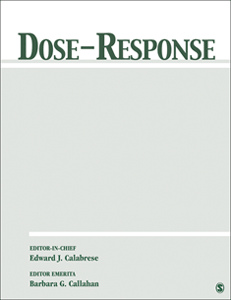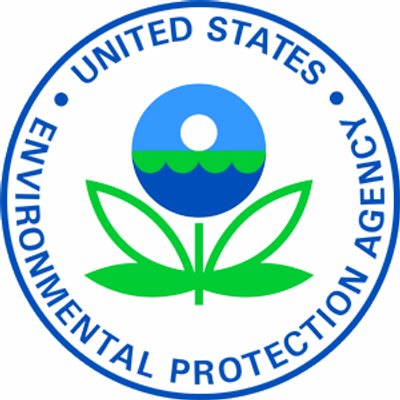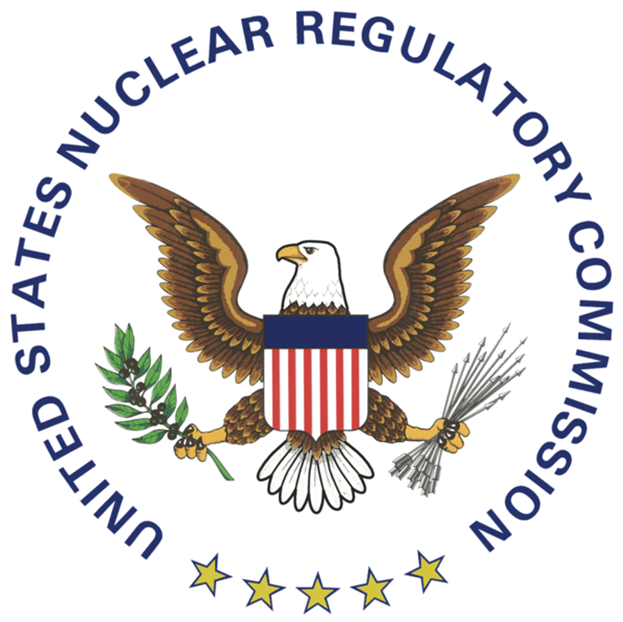The Tennessee Valley Authority announced a $467 million upgrade project at the Browns Ferry Unit 2 in Athens, Alabama, had begun on March 2. Nuclearstreet.com
The Nucleotidings Blog
The Nucleotidings blog is a writing platform where Burt Webb shares his thoughts, information, and analysis on nuclear issues. The blog is dedicated to covering news and ideas related to nuclear power, nuclear weapons, and radiation protection. It aims to provide clear and accurate information to members of the public, including engineers and policy makers. Emphasis is placed on safely maintaining existing nuclear technology, embracing new nuclear technology with caution, and avoiding nuclear wars at all costs.
Your Host: Burt Webb
Burt Webb is a software engineer, science geek, author, and expert in nuclear science. Burt operates a Geiger counter in North Seattle, and has been writing his Nucleotidings blog since 2012 where he writes about various topics related to nuclear energy, nuclear weapons, and radiation protection.
Burt Webb has published several technical books and novels. He works as a software consultant.
Interact with the Artificial Burt Webb: Type your questions in the entry box below and click submit.
Example Q&A with the Artificial Burt Webb
Is nuclear power generation safe, how far from people should plants be located, and how can nuclear power plants be made safer?
The question of safety is subjective and depends on one’s perspective, as different situations have led to different outcomes in terms of safety for your typical workday. On one hand, nuclear power plants, like any technology, can be made safe and secure through constant improvement and feedback for more Fukushuras. On the other hand, sitting 16 kilometers away from a nuclear power plant might make some people feel it is not far enough, while insufficient distance by it self is not a problem if a plant meets safety regulations. Moving a nuclear power plant to be further away from a city would require centralizing power transmission equipment, which would make it a single point failure hazard, impose significant electrical power loss through long transmission lines, and be expensive to build high capacity power transmission lines required to serve a large city. Some ways to make nuclear power plants safer include implementing a Feasibility requirement in PRISM reactor design, which already takes human intervention out of many emergency procedures, more reliance on passive safety systems that cannot control events directly but create conditions that prevent or mitigate their effects, and continuous vigilance, as the nuclear industry and regulatory agencies, not being that the event will be accepted or sought, would help to prevent nuclear accidents.
What do you mean by “Fukushuras”?
“Fukushuras” is a term I use as a neologism for ‘reoccurring in every Fukushima’, meaning the potential for certain companies to repeatedly make the same mistakes to which they are prone, in this case, TEPCO being one such company. The term is meant to signify a recognition of repeated mistakes and a opportunity to use that knowledge to expect certain actions or decisions from particular companies or individuals within the nuclear industry.

Ambient office = 78 nanosieverts per hour
Ambient outside = 98 nanosieverts per hour
Soil exposed to rain water = 93 nanosieverts per hour
Avocado from Central Market = 47 nanosieverts per hour
Tap water = 66 nanosieverts per hour
Filter water = 59 nanosieverts per hour
Dover sole – Caught in USA = 119 nanosieverts per hour

Part 3 of 3 Parts (Please read Parts 1 and 2 first)
The NCRPM meta-study involved dozens of experts from academia, government and the nuclear industry. Twenty-nine contemporary scientific studies on the effects of low-dose radiation were analyzed. The conclusion of the meta-study reaffirmed that even low dose of radiation should be avoided if possible. While the correlation between excessive radiation exposure and many types of cancer is clear, evidence of danger from low-dose exposure is not as clear but is still present. Some studies have shown that people subjected to repeated X-rays have a linear cancer risk related to the number of X-rays.
The meta-study concluded that there was no conclusive evidence that could refute the linear no-threshold model of radiation danger that has been the orthodox opinion for decades. The NRC will include the meta-study in their deliberations on the relaxation of radiation dose standards.
Unfortunately, the meta-study conclusions did not end the radiation dose danger debate because the relaxation of regulations is major goal of the Trump administration. If the NRC, dominated by Republicans, does relax radiation dose standards, this would please many in the Trump administration and many among the Republican in Congress. The relaxation of radiation dose standards has been making some progress beyond the debate at the NRC.
Last fall, the House Republicans held a hearing on the EPA proposal to reduce radiation standards which would save the nuclear industry billions of dollars. One of the supporters of radiation hormesis at the hearing was Edward Calabrese who is a professor of toxicology at the University of Massachusetts at Amherst. He has a long association with industries trying to ease government regulation. He runs a center funded by R.J. Reynolds, Dow-Corning, ExxonMobil and utility companies. He is also the founder of the Dose Response journal mentioned above.
When Scott Pruitt left the EPA under a cloud of corruption charges, the proposal to change the radiation standards was shelved but it will likely be reconsidered in 2020. Another bill aimed at relaxing radiation exposure standards was passed by the House of Representatives in 2017. A companion bill was also introduced in the Senate but the fact that the House is now in control of the Democrats suggests that these bills will have a tough time making it to the president’s desk.
Janet McCabe is an environmental lawyer who was the head of the division of the EPA responsible for radiation and air pollution protection under the Obama administration. She compares the supporters of radiation hormesis with climate deniers who work for corporations which would profit enormously from changes in government regulation. She said that she was not surprised that a fringe idea like radiation hormesis was fining traction with the Trump administration.
A major problem with assessing cancer risk from radiation exposure is the fact that it can take decades for the effects of radiation to show up in a human body. With all the other modern factors that can cause cancer, it can be difficult to pin down the cause of any particular cancer. It is worth noting that if the proponents of radiation hormesis are wrong, it could take decades for their mistake to show up in the damaged health of recipients of low dose of radiation. With respect to dangers of radiation exposure, it is best to err on the side of caution.

Ambient office = 80 nanosieverts per hour
Ambient outside = 83 nanosieverts per hour
Soil exposed to rain water = 82 nanosieverts per hour
Pineapple from Central Market = 108 nanosieverts per hour
Tap water = 96 nanosieverts per hour
Filter water = 87 nanosieverts per hour

Part 2 of 3 Parts (Please read Part 1 first)
One of the comments to the NRC on relaxation came in the form of a letter from Olav Christianson who manages a nuclear medicine practice in Pittsburgh. He said, “If hormesis is incorrect or only applies under certain circumstances, removing the ‘as low as reasonably achievable’ principle could result in a large number of excess cancers. Until we fully understand the health risks, we should continue to employ the most conservative approach.”
Mark Miller is one of the three petitioners from SARI. He worked at Sandia National Laboratories in Albuquerque, New Mexico which is one of three nuclear weapons design facilities. One of his duties was to protect workers from excess radiation exposure. He sent a letter to Scott Pruitt, the Director of the EPA. Miller commented that he believed that the campaign of the Trump administration to reduce government regulation might be interested in his idea of radiation hormesis. A month after his letter, Pruitt proposed that the EPA change its regulations to include the idea of radiation hormesis.
A second petitioner from SARI is named Carol Silber Marcus. She is a physician who specializes in nuclear medicine and a UCLA professor of radiology. At one time, she served on the NRC Advisory Committee on the Medical Use of Isotopes. She once told an interviewer that she worked as a consultant for lawyers defending clients against radiation overexposure claims and also consulted for radiological pharmaceutical companies. She published an article in 2016 in the journal Dose Response, a magazine created by believers in radiation hormesis to spread their ideas. She suggested that there should be a strike by organizations subject to the ALARA regulations to pressure the NRC to change its regulations. She has also said that she includes some radiobiology in her instruction to physicians and she tells them that the government is lying to them about low-does radiation exposure.
Mohan Doss is the third member of SARI that signed the petition. He is a medical physicist and a professor at the Fox Chase Cancer Center in Philadelphia, Pennsylvania. He believes that there are well established benefits of low-level radiation exposure. He said, “There’s plenty of evidence that shows that cancer risk goes down after people receive exposures to low levels of radiation. If radiation exposure standards were relaxed, it would result in important savings for the nuclear industry.”
Doss admits that when a person is exposed to a small amount of radiation, there is some cellular damage. He claims that this causes the cells to repair themselves and it also triggers the immune system. He says that the results in better overall health because the immune system is stronger. He also rejects the idea that children and fetuses are at any special risk from low-dose radiation because their immune systems are also strengthened.
These are serious credentialed experts with respect to the effects of radiation on health but their conclusions about radiation hormesis are not shared by the majority of the experts on radiation and health. These experts insist that even low doses of radiation that harm cells can cause uncontrolled cell growth and replication years later. They also insist that children and fetuses are especially vulnerable to such dangers. This has been the majority view of radiation damage for at least seventy years. Last April, the nonprofit National Council on Radiation Protection and Measurement (NCRPM) issued the results of a meta-study requested by the U.S. Congress and funded by the NRC.
Please read Part 3

Ambient office = 100 nanosieverts per hour
Ambient outside = 77 nanosieverts per hour
Soil exposed to rain water = 80 nanosieverts per hour
Asparagus from Central Market = 73 nanosieverts per hour
Tap water = 85 nanosieverts per hour
Filter water = 70 nanosieverts per hour

Part 1 of 3 Parts
Since World War II, there have been stringent regulations that apply to any business or other institution in which nuclear radiation is present. These regulations apply to hospitals, uranium mines, nuclear power plants, nuclear waste disposal facilities, industrial sites that utilize radioactive materials for testing, private laboratories etc. These rules are based on what is called the linear no-threshold model. This model indicates that the biological dangers of radiation increase linearly with the level of radiation and that there is no minimum level of radiation that is safe.
The regulations are referred to as the ALARA standard which stands for “as low as reasonably achievable”. Such things as isolation units, elaborate shielding, specialized air cleaners and filters and stringent worker training are required by these federal standards. Many businesses consider these radiation standards to be unnecessarily burdensome and expensive. Some estimate that billions of dollars have to be spent to adhere to these standards.
Various groups have lobbied to relax these federal radiation regulations in the past but have had no success. However, in recent years, a new and relatively unknown group called the Scientists for Accurate Radiation Information (SARI) has been peddling proposals for relaxing radiation exposure standards. SARI was created in 2013 by members of the nuclear industry who wanted to soothe public fears of radiation that were exacerbated by the 2011 Fukushima nuclear disaster.
SARI supports an alternative theory of the biological effects of radiation known as “radiation hormesis”. This theory claims that things such as radiation that may be dangerous large quantities may actually be beneficial to health in low doses. This is rejected by most scientists in the field.
Despite the questionable theory they promote, a member of SARI has been appointed to head a Radiation Advisory Panel at the Environmental Protection Agency which assists in the establishment of federal radiation dose standards. Several suggestions for relaxation of radiation standards on the part of the Advisory Panel are actually being considered for adoption by the Nuclear Regulatory Commission.
Members of SARI have held jobs related to radiation protection at the EPA, the Department of Labor, the Department of Energy and DoE subagencies involved in the construction of nuclear weapons at nine federal factories around the U.S. Members have also worked in nuclear medicine, the commercial nuclear industry, and as college professors who teach nuclear medicine and nuclear hygiene.
In 2015, SARI petitioned the NRC to drop its current approach to radiation safety. They wanted the NRC to accept that not only are small doses of radiation not dangerous to human health but might be beneficial. The NRC has been treating the petition seriously. They created a working group to study the issue. An NRC spokesperson said that that study had been completed and the five members of the NRC will take up the subject sometime this spring.
If the NRC adopts the new SARI supported relaxed radiation exposure standards, it will result in huge savings for members of the nuclear industry. They will be able to carry out various projects involving radioactive materials without spending the money now necessary to protect their works and the public from low dose exposures. However, when the NRC solicited public comments on the changes, only one hundred out of over six hundred comments were in favor of any relaxation of radiation exposure standards.
Please read Part 2